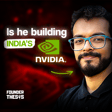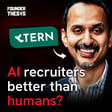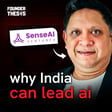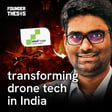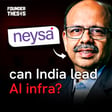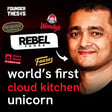
Deep Dive: How We Got to GPT (and What's Next) with Vinay Sankarapu (Arya.ai- An Aurionpro Company)
"When people think of AI, they think it's probably happened in the last 10 years or 20 years, but it's a journey of 70 plus years."
This quote from Vinay Sankarapu challenges the common perception of AI as a recent phenomenon.
Vinay Sankarapu is the Founder & CEO of Arya.ai- An Aurionpro Company, one of India's pioneering AI companies established in 2013. An IIT Bombay alumnus, Vinay led Arya.ai to become a profitable (EBITDA positive for 3+ years) enterprise AI player focusing on the BFSI sector, achieving significant scale (~₹50-100 Cr revenue range) before its acquisition by Aurionpro Solutions. He was named in Forbes 30 Under 30 (Asia) and is now also leading AryaXAI, focusing on making AI interpretable and safe for mission-critical applications.
Key Insights from the Conversation:
👉AI's True Timeline: Unpacking the 70+ year evolution from Alan Turing to modern LLMs.
👉Core Concepts Demystified: Neural Networks, Deep Learning, Backpropagation, CNNs, RNNs, Transformers explained simply.
👉The Deep Tech Journey: The challenges and pivots involved in building an early AI startup in India.
👉Explainability is Key: Why making AI understandable (XAI) is critical for trust and adoption, especially in regulated industries.
👉Future of AI: Insights into AI agents, verticalization moats, responsible AI governance, and the changing SaaS landscape.
#AI #ArtificialIntelligence #MachineLearning #DeepLearning #AIHistory #TechHistory #NeuralNetworks #LLMs #Transformers #ExplainableAI #XAI #ResponsibleAI #AIEthics #AIGovernance #StartupIndia #IndianStartups #Entrepreneurship #FounderThesis #DeepTech #BFSI #FintechAI #podcast
Disclaimer: The views expressed are those of the speaker, not necessarily the channel.


